Matthew J. Westerby • National Gallery of Art
Recommended citation: Matthew J. Westerby, “Restabilizing a Locus Designatus: Capitals as Gnomons on the Cloister Ground at Santa Maria de Ripoll,” Different Visions: New Perspectives on Medieval Art 9 (2023). https://doi.org/10.61302/GMPM4874.
Medieval monastic cloisters are cultivated grounds, studded with gardens, sculpted arcades, and waterworks. The four-sided cloister became common to cathedrals and monasteries after the Carolingian era across Western Europe. As enclosed spaces, cloisters were symbolic microcosms, especially for the monastic communities who envisioned the cloister as a paradise or locus amoenus.[1] The cloister was also conceived as a manifestation of the heavenly Jerusalem on earth, figured in the starry sky.[2] Along similar lines, sculpted capitals in monastic cloisters have been interpreted as symbolic figural images imbued with purpose and narrative trajectory.[3] Cloisters were also sites for mundane operations, like book making and reading.[4]
I suggest in this essay that sculpted capitals and piers, in the contexts of certain cloisters, function as gnomon-like markers of things that traversed the cloister ground. This idea is sketched out across three sections. The architectural and institutional groundwork is explored through parameters, like monastic customs in small books or manuals, and in the physical perimeters that constituted cloister spaces. I next turn to outlining clusters of meanings in sculpted capitals and read these against actions performed by monks, especially those performing the role of the Sacristan or custos. A third section more deeply considers the specificity of the locus designatus introduced in a manual created at the Abbey of Fleury and the concept of procedurality with the goal of nuancing an essentially teleological framework that has conditioned art historical analysis of cloister capitals and of other sculpted stone monuments that do not easily fit into established categories. In concluding, I offer an observation of the doubling, or repetition, of human and non-human agents which is manifested in the repetition of figural forms around the basket of the sculpted capitals and in sculpted figures like angels that encircle and contain more unstable or aquatic imagery, which I argue at Ripoll and Moissac represent moving subjects with ambiguous meanings.
Parameters and Perimeters
The experience of viewing sculpted capitals in monastic cloisters was a highly variable phenomenon, depending on weather and time of day. In fact, gazing at the sky from specific locations within the cloister is a monastic commonplace, especially for the Sacristans at Benedictine monasteries who noted celestial events in their books and sought out constellations at night.[5] The pre-dawn observation of constellations was also important for the operation of mechanical water clocks, which may or may not have served a reliable role in monastic timekeeping.[6]
The cloister at the monastery of Santa Maria de Ripoll in the Catalan Pyrenees is considered among the earliest with structures organized around a regular quadrilateral.[7] This space was defined by a perimeter of stone walls built in the late tenth century (Fig.1). A canal running across the western side of the cloister dates to the same early foundations, connected to a longer network of aqueducts known as the acequia de Santa Maria begun in the tenth century.[8] The underground canal remained in place when the cloister was renovated with marble and polychromed limestone in the twelfth century. The canal also powered a mill and probably filled a cistern that regulated a water clock, which would have sounded small bells at preset intervals to announce the passing time.[9]
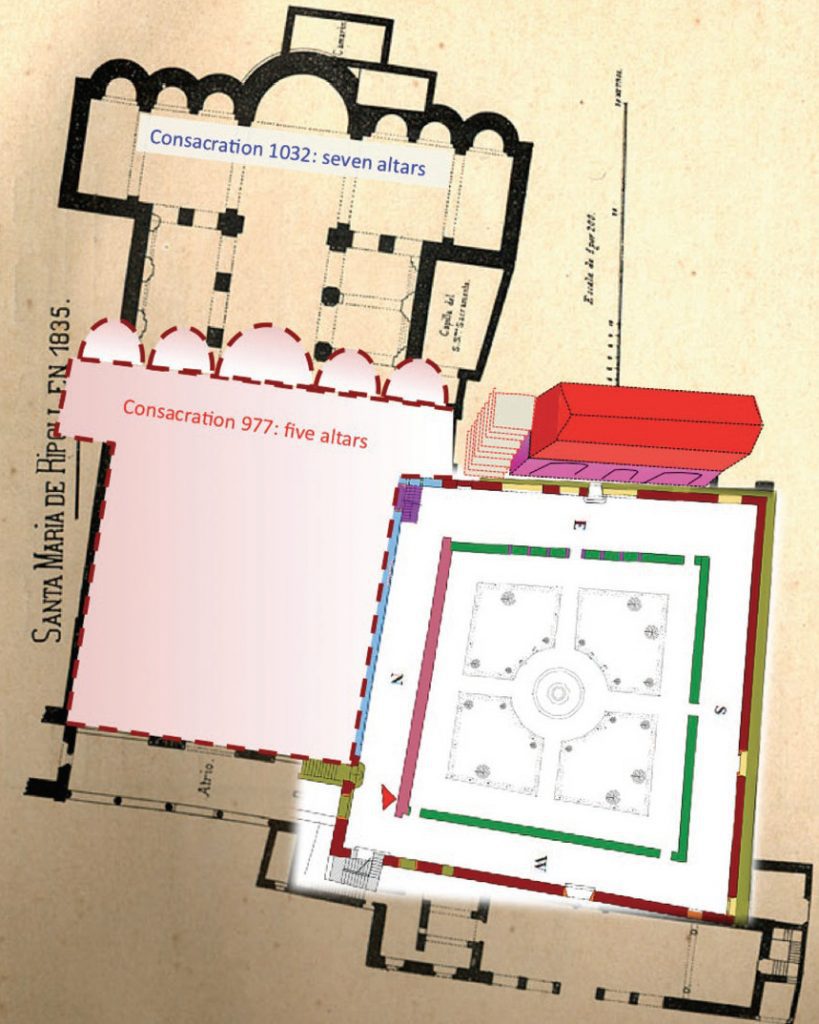
Figure 1. Monastery of Santa Maria de Ripoll, plan of abbey church consecrated in 977 and tenth-century cloister walls. Image: © G. Boto, after C. Barraquer (1906), with permission.
The ritualized use of the cloister ground for gazing at the heavens is vividly documented in a small handbook written at Fleury Abbey (Saint-Benoît-sur-Loire, France) in the eleventh century.[10] The anonymous author carefully describes the location of a juniper bush and architectural details that orient the reader to a designated spot (locus designatus) fixed at one side of the cloister.[11] This handbook shows how the perimeter of the ancient cloister ground solidified lines of sight that would, in practice, determine the starting moment for the dawn prayers at the abbey church across the eleventh and twelfth centuries.[12] Inscribed among a collection of poems with musical notation, the instructions in the Fleury handbook associate feast days with the positions of bright stars in certain constellations. Once the identified star or cluster is glimpsed in the correct position, the reader is instructed to light lamps or ring bells to rouse the sleeping brothers. Take, for example, the instructions for the feast of Saint Vincent (Fig. 2):
And on the feast of St VINCENT, when you see them [i.e. two bright stars in the scales of Virgo] just rising above the fifth window, near the roof, and—note this carefully—to observe them you must move back a little from the usual place towards the juniper bush, on the path to the well, so you can see and count the windows.[13]
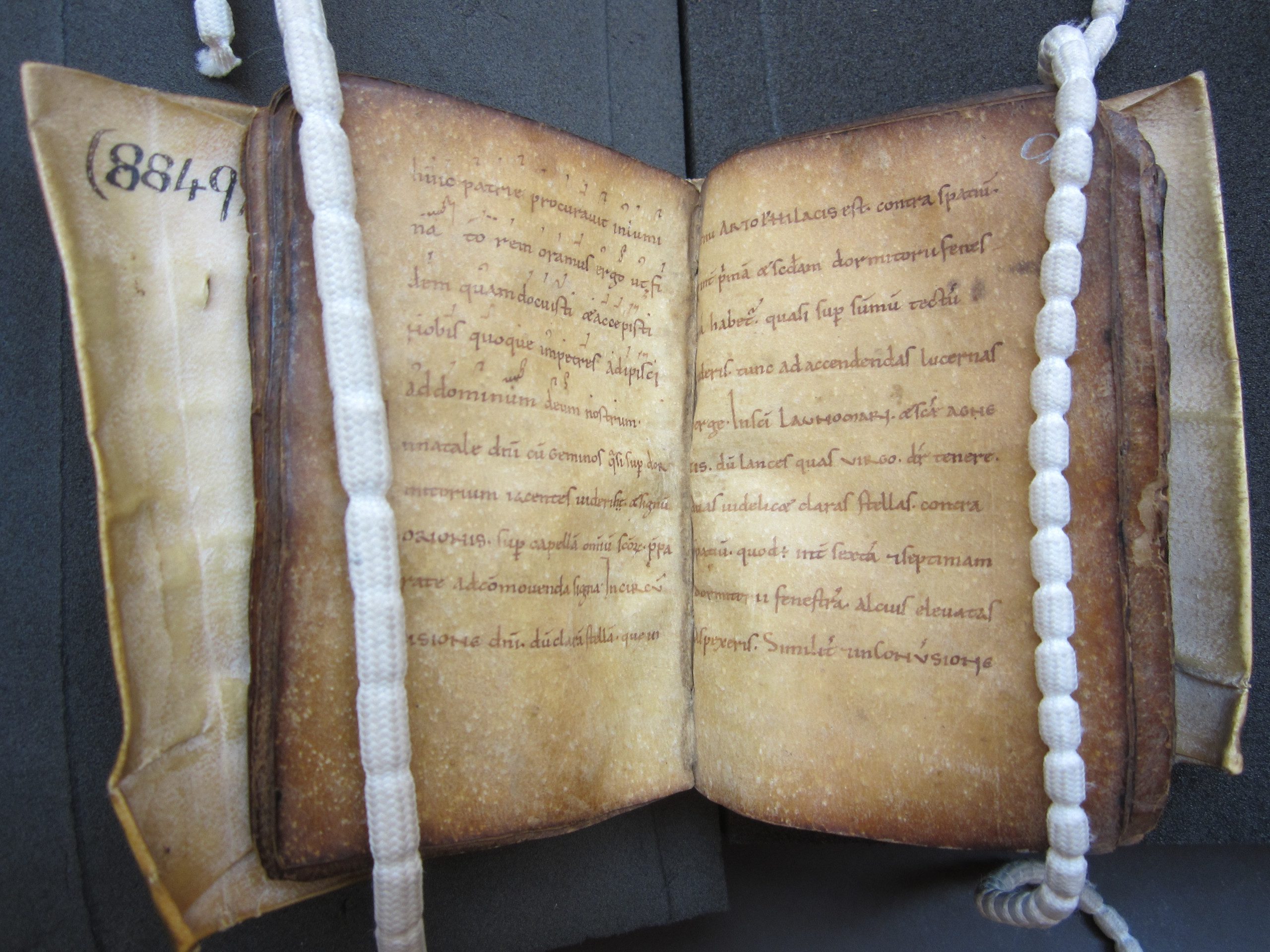
Figure 2. Star time table, 11th century, Oxford, Bodleian Library, MS Bodley 38, ff. 20v-21r. Photo: Seb Falk, 2018, with permission.
This handbook shows how the Sacristan was expected to memorize the course of stars as they aligned with rooftops and windows, in this case recorded in a pocket-sized format for reference or for the instruction of novices.[14] Although it was written for use in the built environment of the cloister at Fleury, the custom of gazing from a particular spot in the cloister was no doubt known to other monasteries. In the ancient cloister at Ripoll, the view standing on the north side of the cloister is now obscured by a second floor, added hundreds of years later. The north-to-south flow of the underground canal roughly parallels one of the lines of sight for gazing upwards and outwards, much like the path towards the well at Fleury (Fig. 3).[15]
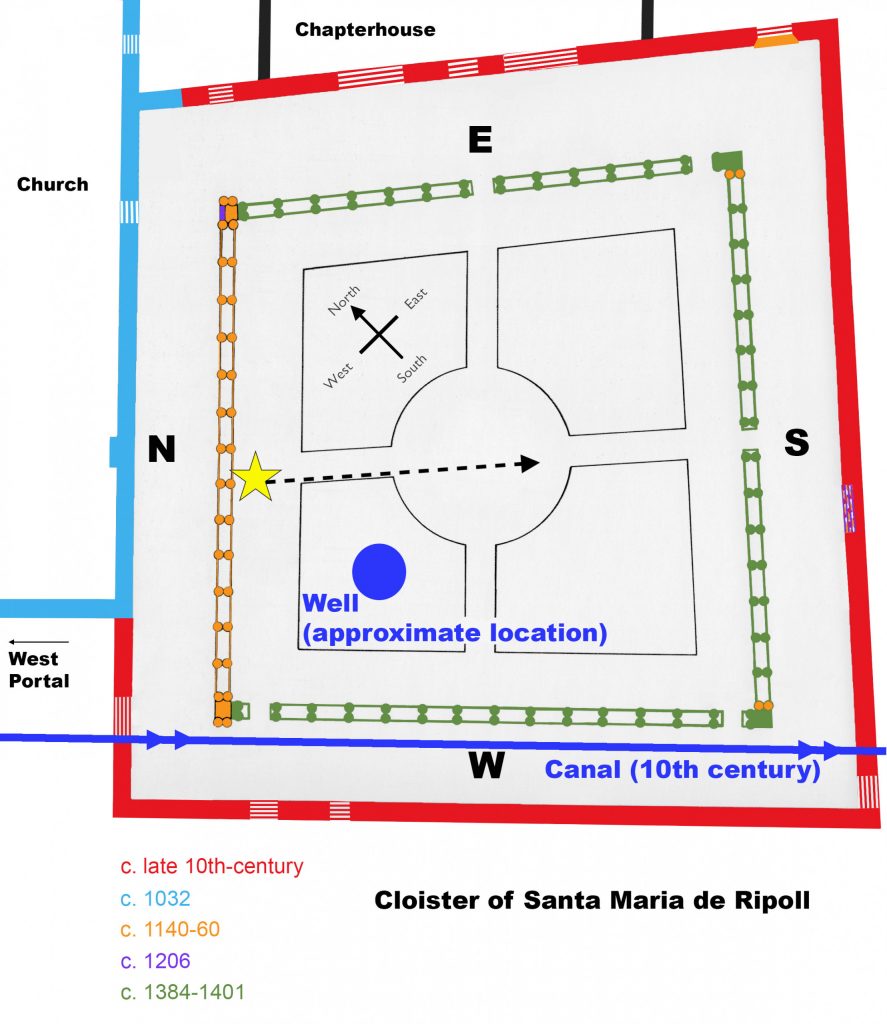
Figure 3. Plan of cloister at Santa Maria de Ripoll showing approximate location of ancient irrigation canal and well, with a yellow star marking a hypothetical location for star gazing towards the southeast. Image: M. Westerby, after E. Junyent, 1975.
The Ripoll scriptorium produced the earliest medieval Latin description of a water clock (clepsydra) and a text describing the astrolabe as an instrument, De utilitatibus astrolabii (On the Uses of the Astrolabe), today in Barcelona.[16] Other illustrated books on astrology survive from Ripoll, including an extensive astrological miscellany created 1055–1056 collecting the works of Pliny, Hyginus, Isidore, and Bede.[17] The significance of these translations and illustrated astrological works was certainly not lost on the twelfth-century renovators and makers of art working in the cloister at Ripoll, including poets, illuminators, teachers, and clerics.[18]
In other words, the cloister was a quadrilateral enclosure in which humans acted to perceive the world from the flat plane of the cloister ground. As a kind of ritualized observatory nearby the common eating and sleeping areas and easily accessed by the resident monks, the cloister was a meeting ground for all sorts of people, purposes, and events. Other media and objects rendering the post-Carolingian cosmology that informed the Benedictine worldview at Ripoll demonstrate the significance of the enclosed space as a perceptive ground for encounters with natural phenomena—such as the courses of stars and the ceaseless flow of water through aqueducts and from fountains.
Cosmological diagrams, as a type of image, may be associated with the Benedictine monastic culture in which they were copied and dispersed through other media, like the Creation Tapestry at Girona Cathedral with Christ Pantocrator at its center (Fig. 4).[19] Much like the abbey church at the center of the Christian monastic sphere, Christ is shown at the center of a colorful creation cycle and framed by the Four Winds. The edges of the tapestry are inhabited by ancient figures of the Four Rivers of Paradise, the Labors of the Months, and a personification of the Year (Annus). A familiar cosmology to the Creation Tapestry appears in the sculpted archivolts of the twelfth-century stone portal which frames an ancient doorway on the west end of the Ripoll abbey church, which also stands very near the tenth-century canal, concealed out of sight below paving stones (labeled “West Portal” in Fig. 3). The water shown teeming with life in the tapestry, bounded by round masses of dry land or rocks, projects an image of orderly creation that was manifested in stone portals like the one at Ripoll.
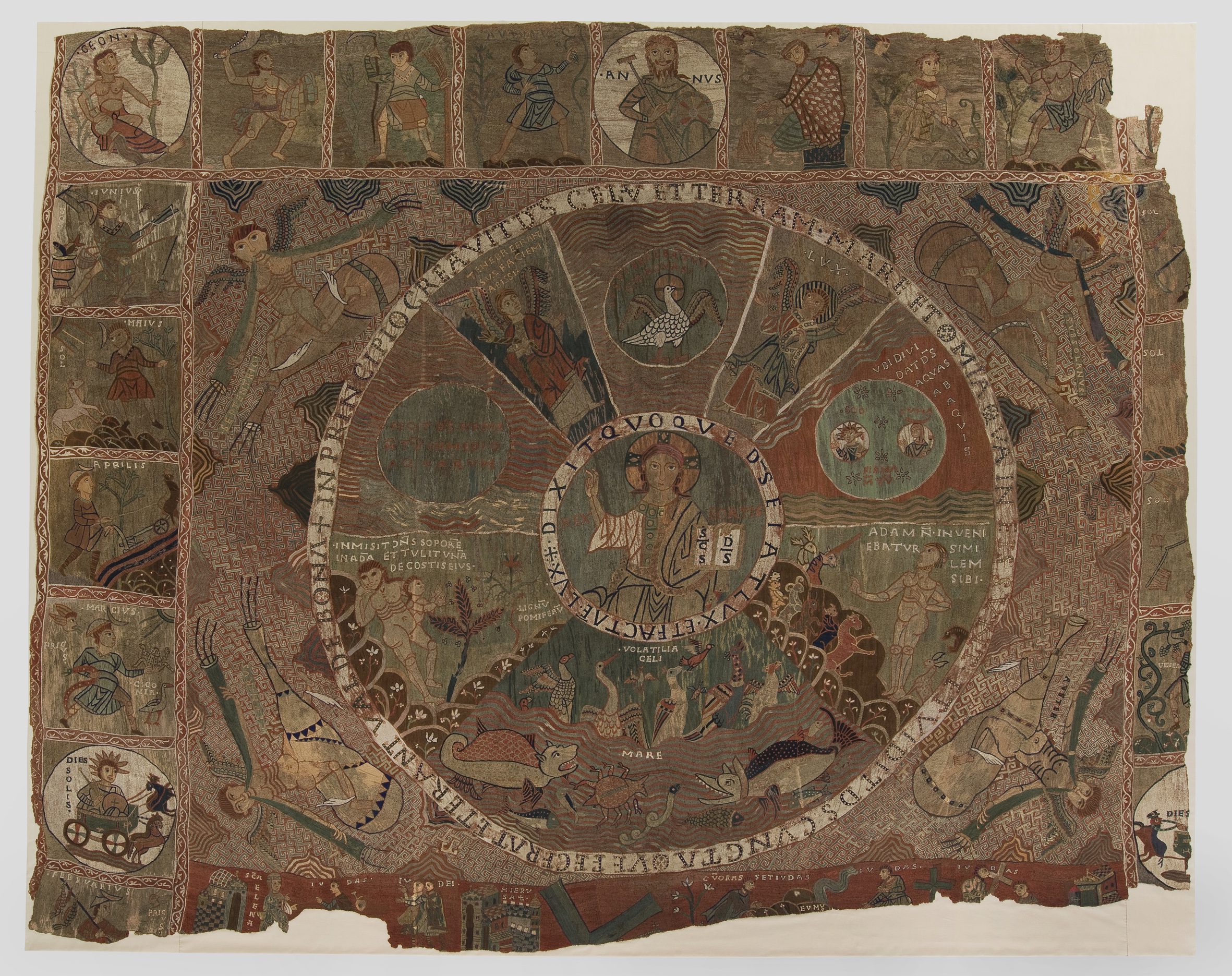
Figure 4. Creation Tapestry, 11th century, Girona Cathedral. Photo: Wikimedia Commons, Kippelboy, CC-BY-SA-3.0.
Clusters and Customs
Nearby the sculpted portal and directly adjacent to the abbey church, the north side of the Ripoll cloister is decorated with white marble capitals sculpted in the twelfth century (Fig. 5).[20] Although these capitals lack a comprehensive iconographic trajectory seen in other cloisters in the region, like Sant Cugat del Vallès,[21] certain clusters represent eschatological and cosmological themes in their imagery and placement.[22] Capitals installed in the northeast and northwest corners of the Ripoll cloister are mirrored in clusters at Santa Maria de Lluçà, a small church within the same medieval diocese.[23] Burials on the northeast corner of the cloister at Ripoll also show the significance of the north side, nearest to the church. A memorial relief for abbot Ramón de Berga (d. 1206) was added in the northeast pillar and tombs for the counts of Besalú and Barcelona also existed on the north side, including the monastery’s founder, Guifré el Pilós (d. 897). As the only likeness of an abbot or monk surviving in the Ripoll cloister today, the relief of Abbot Ramón, shown with a crosier and book, evokes the vows of stability and obedience that Benedictines took upon their entry to monastic life. While stability (geographic and institutional) was a holy vow, it also existed alongside procedures for transitus, the passage between religious orders.[24]
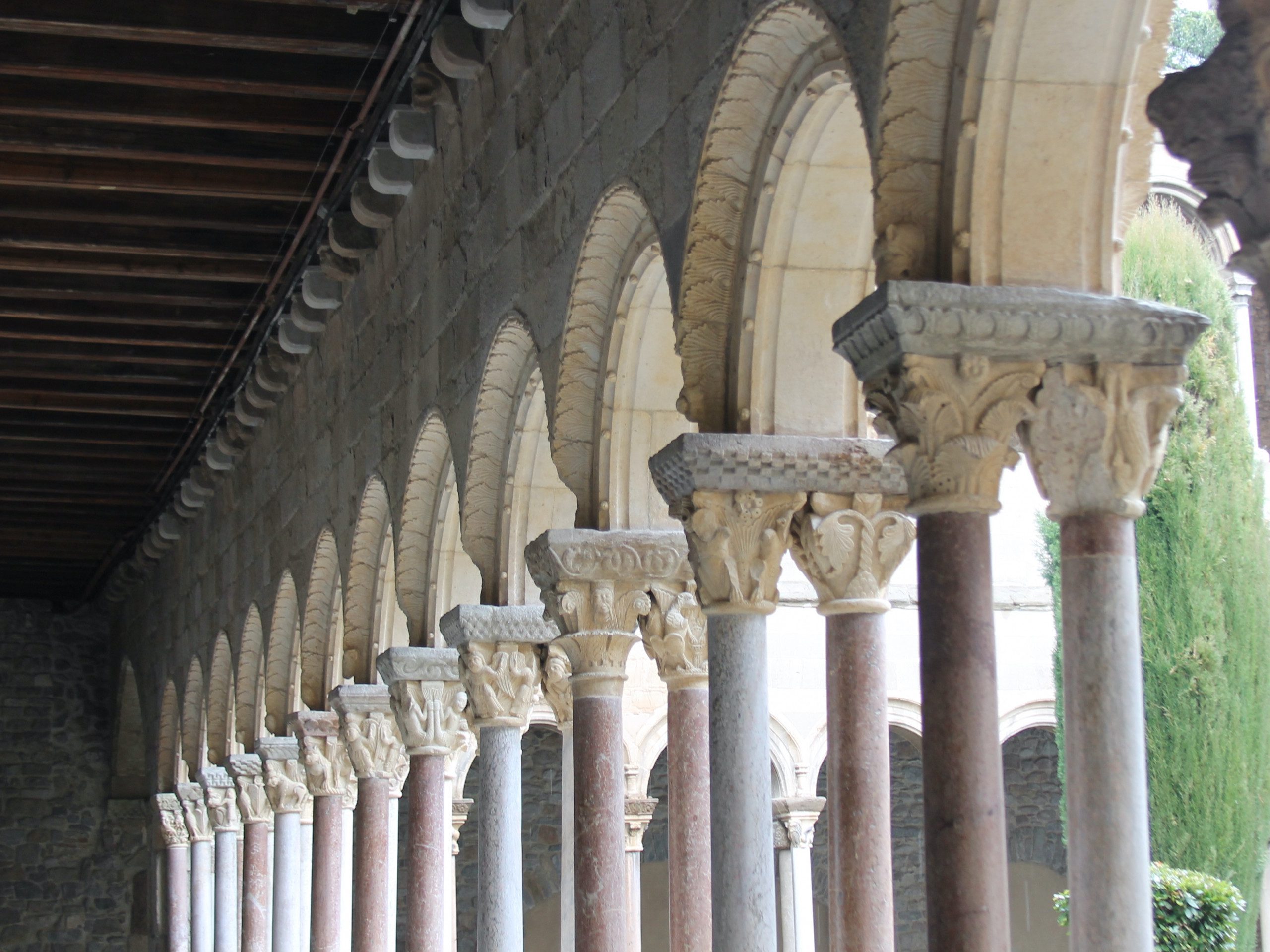
Figure 5. Ripoll Cloister, view towards northeast pillar, mid-12th century. Photo: M. Westerby, 2013.
Historiated capitals and monumental reliefs in other ancient Benedictine cloisters show a similar clustering of figural capitals on the north sides situated near wells and fountains. A wave-pattern relief at the center of the north cloister walk at Saint-Pierre de Moissac (Tarn-et-Garonne, France) is one enigmatic example (Fig. 6). This relief lacks the celebrated portraits and epigraphy seen in the other reliefs and historiated capitals, like the portrait of Abbot Durand de Bredons (d. 1072) in the center east pillar and the dedicatory inscription in the center west pillar, which dates the cloister renovations to 1100.[25] The wave-pattern pillar is interpreted by Chantal Fraïsse as a representation of water, perhaps associated with the location of a destroyed well house that once existed on the north end of the Moissac cloister.[26] A nineteenth-century engraving of this section of the cloister shows two women filling jugs of water flowing from the remains of a plumbing system or aqueduct.[27]
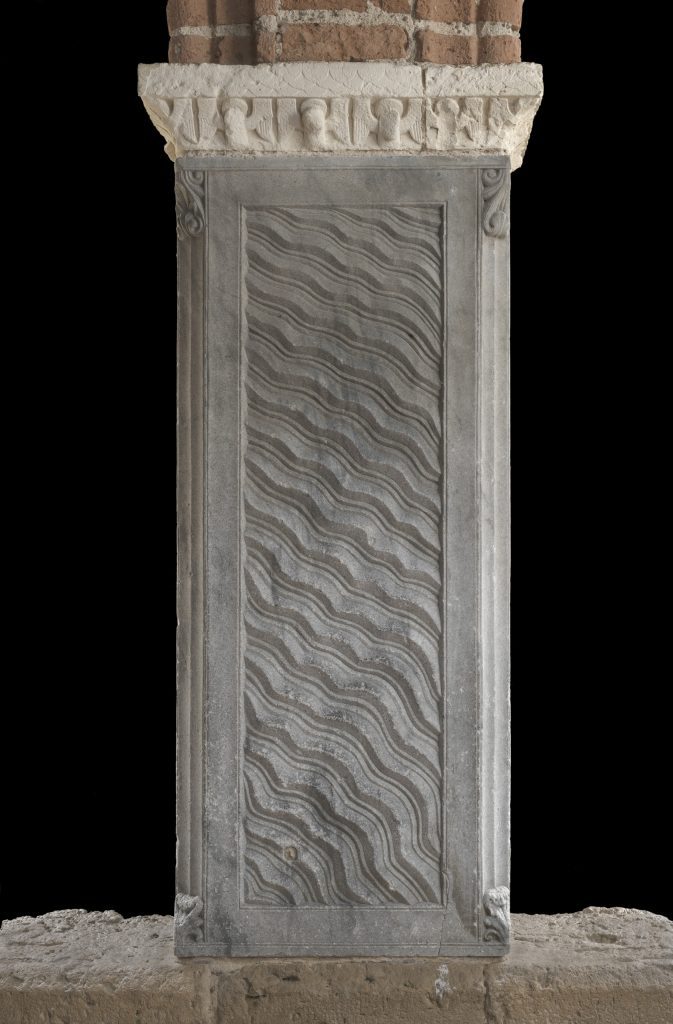
Figure 6. Wave-pattern Pillar, c. 1100, north side of the Moissac Cloister. Photo: Kunsthistorisches Institut in Florenz – Max-Planck-Institut; photographer: Roberto Sigismondi.
The wave-pattern pillar might just as easily represent patterns in clouds or the blowing of winds, like the Four Winds in the Creation Tapestry in Girona. Matching the historiated capitals, this stands below a figural stone abacus, in this case with a row of winged angels that seem to contain the undulating surface of the relief. The angels recall the figures blowing through horns or riding on windbags at the edges of the Creation Tapestry or in medieval mappae mundi, including the world map in the Ripoll astrological miscellany.[28] Barbara Baert has commented on comparable imagery in stone relating to the concept of the acheiropoietoi, or image not made by human hand. Baert notes how full-page Incipit miniatures in Gospels and paved marble cosmic floors can be read as expressions of a “meta-reflexive character of wind as pneumatic form.”[29] Doron Bauer finds closer comparisons for such undulating wave forms in living rocks, proposing that “wave-like geological patterns bore the imprint of primordial transformative liquid forces.”[30] In short, the type of matter (air, water, earth) and its changing state (gas, liquid, solid) is less at issue than the concept of mutability and kinetics—or perhaps instability—that permeates these discourses. In this sense, the wave-pattern pillar at Moissac points to something far beyond itself. It frames the sensation of natural phenomena much like the quadrilateral frame of the cloister ground became the common locale for symbolic yet mundane activities at the monastery.
A pair of capitals at Ripoll with personifications of aquatic subjects at the center of the north side stand out from other capitals in a similar manner to the wave-pattern relief (Fig.7; location indicated with a gold star in Fig. 3). Like the four-sided cloister, the capitals repeat figures in fours, in this case with nearly identical features. Flanked by winged angels like the pillar at Moissac, these paired capitals at Ripoll are set in a cluster, unlike the more decorative capitals at the corners of the quadrilateral space. Embodied viewers in the cloister may have walked by these capitals on either side, standing under the portico or under the sky. A simulation of this spatially aware mode of viewing is possible with 3D models popularized by platforms like Sketchfab, which can be displayed at extreme angles and with options to vary lighting conditions.
One of these paired capitals depicts four bust-length monstrous figures with hands touching a wave-like pattern around the basket of the capital. The other, with four bare breasted figures holding up fish-like tails, is usually identified as the Siren.[31] This pair of capitals stand on variegated marble columns capped with a limestone abacus, patterned in a swirling relief. In the nineteenth century, Josep Pellicer offered two interpretations of these capitals, suggesting that together they depict either Ulysses and his sailors girding themselves against Sirens or the sea god Neptune with a group of Naiads.[32] As a personification of Neptune or Oceanus, the capital recalls the thiasos, or ancient procession of marine gods. Along similar lines, Francisco Prado-Vilar has identified a thiasos in a capital in the nave of Jaca Cathedral—in that case derived from an antique sarcophagus repurposed as a medieval tomb.[33]
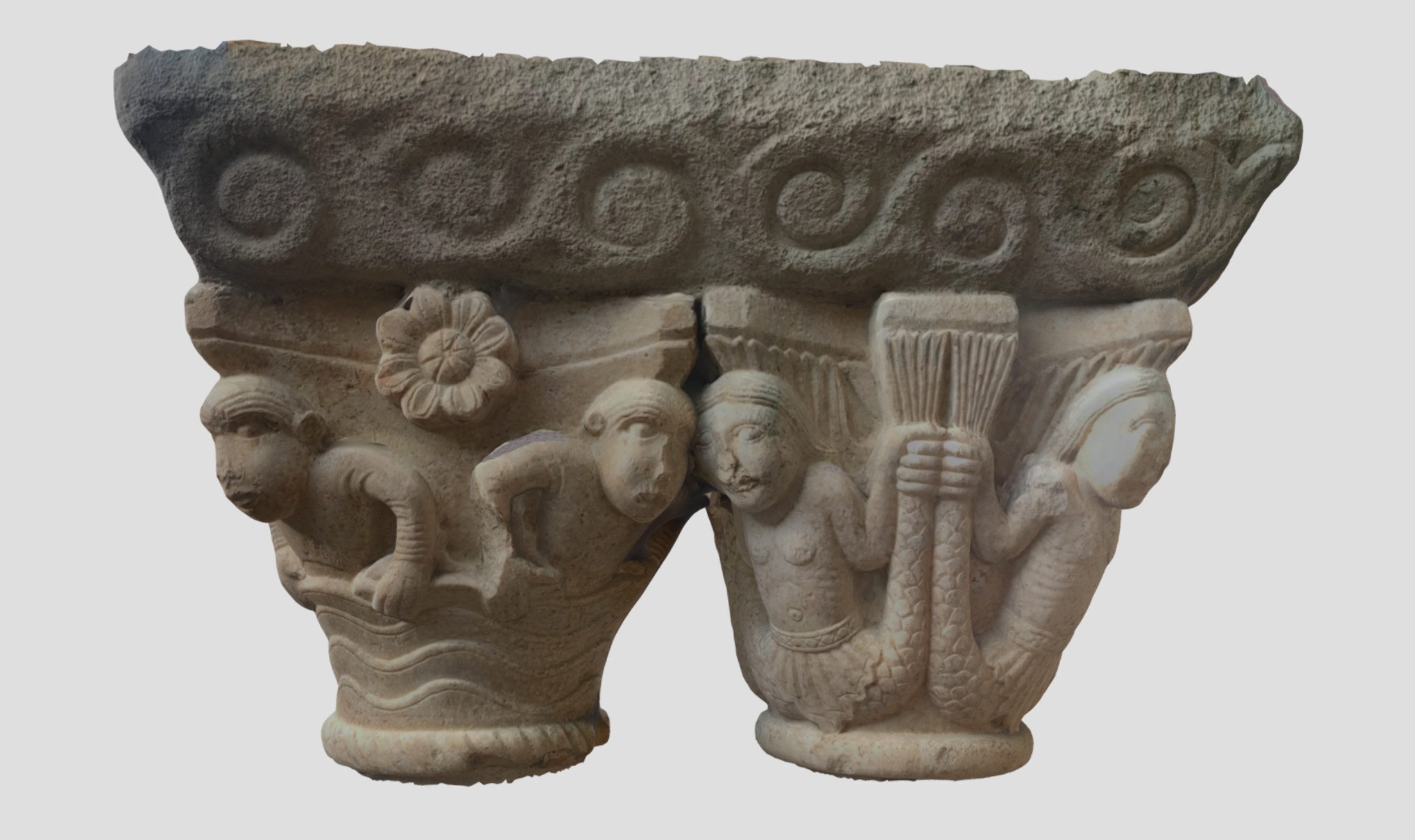
Figure 7. Paired Capitals with Personifications of Aquatic Subjects, mid-12th century. Photogrammetric 3D model. 3D model: Lux Mundi (www.luxmundi.cat) https://skfb.ly/6VCML.
As placed at the center north side of the cloister ground, these capitals and pillars can also be compared to stone monuments that present themselves with the functions of scientific instruments. This includes the sundial-stele of Santa María de Benevívere (Palencia, Spain; figure 8),[34] the Regensburg astrolabe from Sankt Emmeram (Bavaria, Germany; figure 9),[35] and the zodiac pillar of Souvigny Priory (Allier, France).[36] Although such monuments ostensibly served as aids to determine the time of day when standing in the cloister, their utility as instruments has long been in question. At the very least they demonstrate the reception of scientific and technical knowledge, and their placement in the cloister reveals this space as a meeting ground for the experience of natural phenomena through repetitive operations like gazing and measuring. Instruments like sundials and astrolabes were also illustrated in astrological treatises. An image of Aratus of Soli and the muse Urania pointing at a planisphere within an enclosed arcaded space (Fig. 10) appears in a twelfth-century miscellany most likely copied by a scribe from Ripoll (Biblioteca Nacional de España, Ms. 19, f. 55).[37]
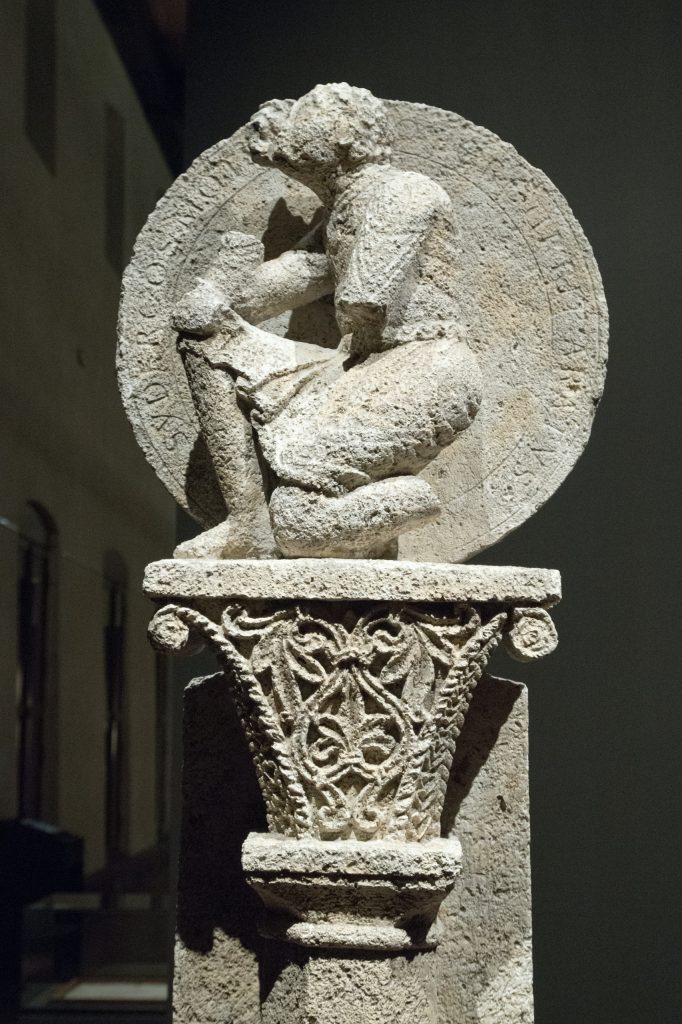
Figure 8. Regensburg Astrolabe, kneeling figure of Aratus of Soli gazing upwards, from monastery of St. Emmeram. Limestone, 11th century. Regensburg, Historisches Museum, HVE 3 .Photo: Wikimedia Commons, Zde, CC-BY-SA-4.0.\
The experience of star gazing and time keeping in the cloister at Ripoll can also be glimpsed in the Gesta vel obitus of Pietro Orseolo, written at Cuxa or Ripoll in the eleventh century.[38] The Gesta opens with Pietro Orseolo’s abdication as Doge of Venice and his withdrawal to the Pyrenees mountains. At Cuxa, Pietro takes on menial tasks, demonstrates humility, and earns the admiration of the monks. Eventually Pietro takes the position of custos ecclesiae, a role related to or below that of the Sacristan,[39] responsible for waking the brothers for the pre-dawn office. His battles with demons and monsters in the night are reported by the author in passages that echo Prudentius’s Psychomachia.[40] After death, Pietro is laid to rest in an arcosolium in the Cuxa cloister, set in the wall abutting the church (juxta ostium ecclesiae).[41] Not long after, a novice Sacristan, whom Pietro had instructed, experiences a vision of the saint marching boldly within a celestial procession of apostolic and Benedictine saints that sing with a special harmony (resonans speciales harmoniae). This solitary vision is said to take place in the chapel before the cock’s crow (ante galli cantum).[42]
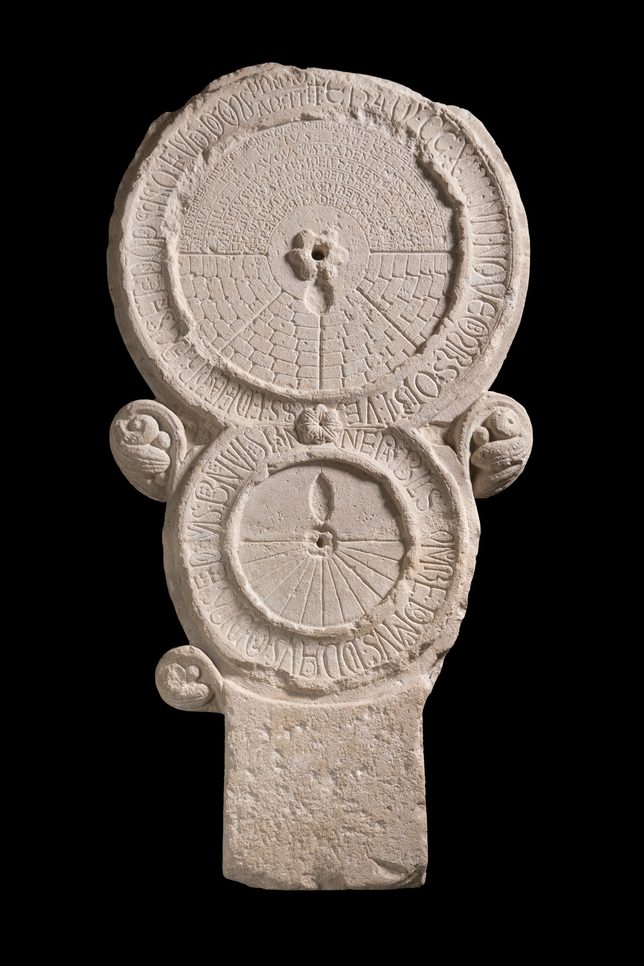
Figure 9. Sundial-stele of Santa María de Benevívere. Limestone, 12th century. Museo Diocesano Palencia. Photo: Diócesis de Palencia.
The actions and transitus of Pietro Orseolo, from the cloister to the church at Cuxa, shows familiar hagiographic patterns of sanctification through spiritual battle, yet it also gives valuable data for the role of the Sacristan in the twelfth-century cloister. Assuming a water clock existed at Ripoll, the human actor (likely Sacristan or custos) tasked with its operation would have also responded to its chiming bells. We can imagine the questions, or even anxieties, a monastic reader-viewer in the cloister at Ripoll encountered in this process. How do I rouse the others from sleep at the right time? Where do I stand to see Orion on Christmas Day? What if clouds are in the way? This last question was in fact addressed by Peter Damian in On the Perfection of Monks, who instructed his reader to recite the Psalter as a method of telling time, “so that when he cannot see the brightness of the sun or the movement of the stars because of thick cloud, the number of psalms which he has got through will act as a sort of clock, enabling him to judge the time.”[43]

Figure 10. Aratus of Soli and Urania, illuminated manuscript miscellany, probably Santa Maria de Ripoll, 12th century. Madrid, Biblioteca Nacional de España, Ms. 19, f. 55. Photo: Biblioteca Digital Hispánica, public domain.
Purpose and Process
By excavating a given standing place—the locus designatus described earlier in the Fleury handbook—we begin to reframe the human actor as just one of the things that moves across the cloister ground. The reader of the Fleury handbook performs a series of procedures: situating, seeing, responding. These actions are familiar to the concept of procedurality in the experience of art and architecture, discussed by Roland Betancourt in relation to illuminated pages and marginal images in Byzantine lectionary manuscripts. Drawing on interactive digital media and video games, Betancourt introduces the concept of procedural rhetoric to the reader’s experience: “…rather than being stably defined, images (that is, miniatures, marginalia, initials in manuscripts or decorative details and spaces in architecture) share with us facets of meaning and spectrums of signification that are perpetually in flux.”[44]
This notion of procedurality and flux might be contrasted to that of ascribing purpose to capitals with monstrous imagery. The historiography of twelfth-century cloister sculpture famously hinges on a passage written by Bernard of Clairvaux in the Apologia ad Guillelmum abbatem in which Bernard criticizes the “ridiculous monstrosities” carved in stone in cloister capitals.[45] With a question posed in rhetorical flair—“what are the filthy apes doing there?”—Bernard implies that he and his twelfth-century contemporaries saw these capitals as imbued with purpose. Unfolding from Bernard’s interrogation, Thomas Dale has demonstrated the appeal to the senses of monstrous imagery in capitals, which worked to affect the thoughts and behaviors of their viewers. Dale notes that monstrous sculptures “fostered deep emotional responses, comparable to the affectus of beholding and embracing a sculpted crucifix or reliquary.”[46] This undeniable affect is almost tangible when reading hagiographical works like the Gesta vel obitus of Pietro Orseolo, who encountered a Hydra and stood strong against divine winds that blew out candles.
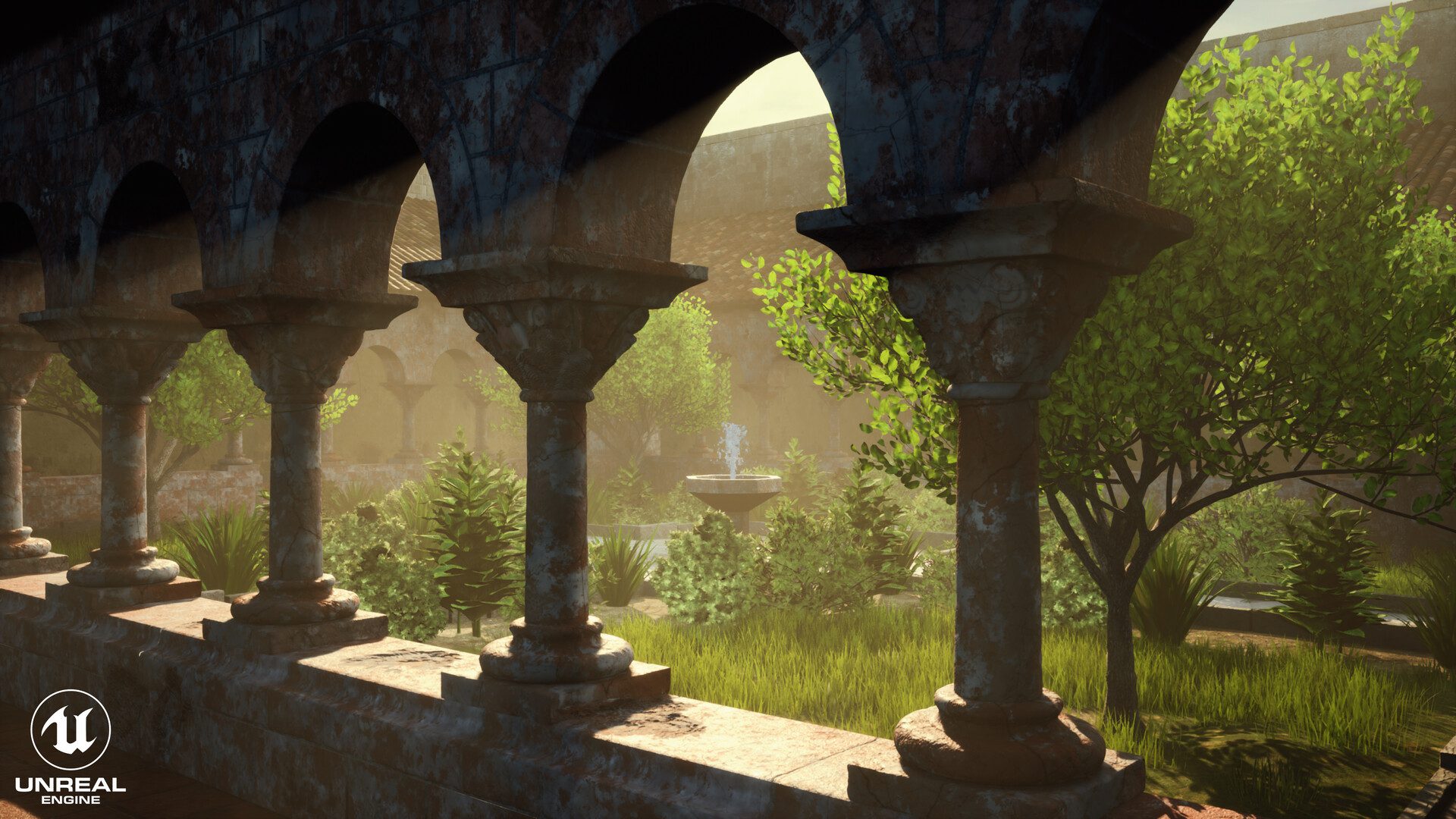
Figure 11. Digital recreation of Cuxa cloister (Cloisters Museum, Metropolitan Museum of Art, New York), created with Unreal Engine by Melissa Cardona. For more of Cardona’s work, see https://www.artstation.com/melissacardona.
At the same time, the issue of ascribing purpose to cloister capitals might be compared to the problems of pagan “star pictures” that illustrated Carolingian and post-Carolingian books on astrology. The challenge of these images was an enduring subtext of Christian religious practice. Eric Ramirez-Weaver has examined this conundrum through the Handbook of 809, especially in a copy painted around 830 for Bishop Drogo of Metz (Madrid, Biblioteca Nacional, MS 3307).[47] The power of these images was contained on the painted page through their careful labeling with tituli and the fact that one’s perception of these clusters of stars as images require a certain process of connecting dots: “the fact that constellations did not exist in the sky precluded them from being considered idols.”[48]
The constellation Heridanus (Eridanus) is called out by name in book three, chapter 23, of the Opus Caroli, as discussed by Ramírez-Weaver: “And is it not obvious that it is contrary to Scripture if one depicts rivers and streams and their confluence as men pouring water out of urns [like Heridanus]? And if the sun and the moon and the other adornments of the sky are depicted in human form [like Orion or Hercules], their heads crowned with rays, does not all of this run quite contrary to Holy Scripture?”[49] Heridanus is among the constellations illustrated in the astrological miscellanies created at Ripoll, including an eleventh-century manuscript now at the Vatican Library (Fig. 12; BAV, Ms. Reg. Lat. 123) and the disputed twelfth-century miscellany in Madrid (Fig. 10; BNE, Ms. 19). This version of Eridanus (also called Oceanus in the excerpted text from Hyginus’s Fabulae) is shown in bust length with rays emanating from the forehead, and with a hand touching a stream of water studded with flower-like stars. All of these features resemble the four aquatic figures in the capital at the center of the north cloister walk, paired with the Siren, and further recall Josep Pellicer’s identification of the capitals as Neptunes and Naiads.
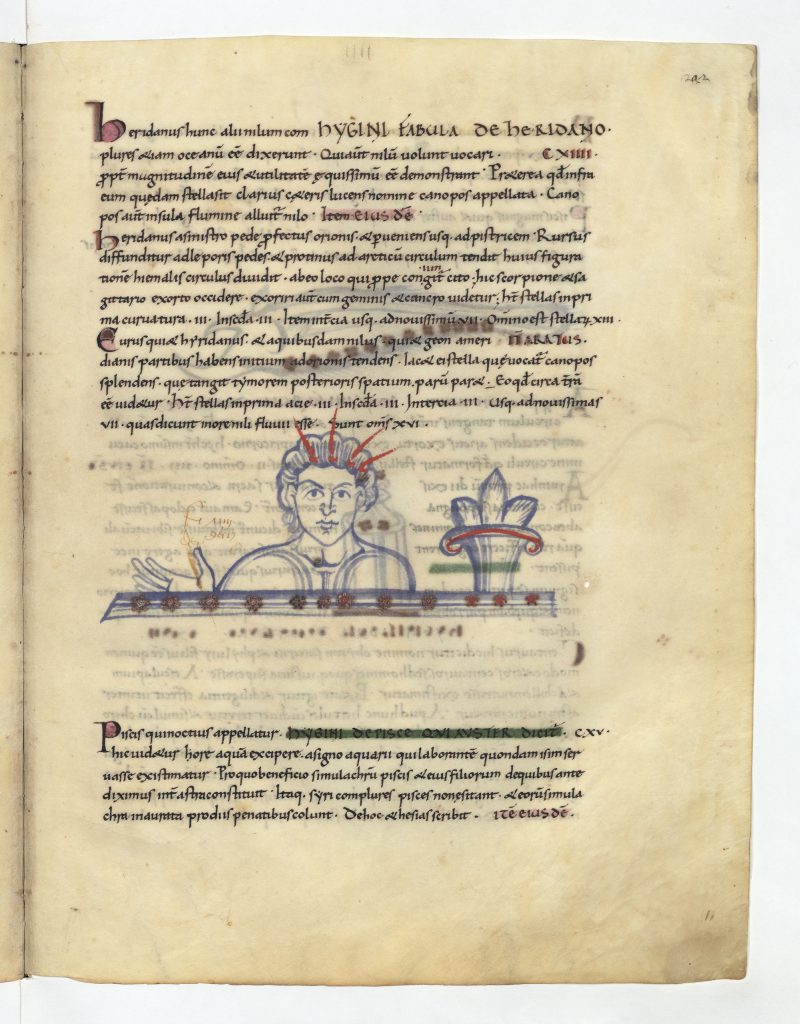
Figure 12. The constellation Eridanus, Astrological Miscellany, f. 202r, scriptorium of Santa Maria de Ripoll, c. 1046, Vatican Library, MS Reg. Lat. 123 (Photo: Biblioteca Apostolica Vaticana, copyright 2021)
The stars that make up the constellation Heridanus were also thought to produce sound as they coursed across the sky, owing to the concepts of heavenly and mundane music that were taught as the basis of music instruction across the Middle Ages.[50] If we label the Ripoll capital as an image of Heridanus, the paired capital with Sirens might be equated with the Nymphs or classical water goddesses. Among the handbooks produced at Ripoll is a series of Latin, Greek, and Hebrew glossaries[51] including an excerpt from Isidore of Seville which defines nymph as a water goddess, “…so called from clouds (nubes), for waters are from clouds, whence this name is derived. They call the nymphs goddesses of the waters…and they call these Muses as well as nymphs, not without reason, because the movement of water makes music.”[52]
Conclusion: Restabilized, Repeated
Considering the cluster of capitals at Ripoll as a locus designatus and the procedural rhetoric that this notion implies, the experience of the cloister aqueducts and fountains merge with the perceived sounds of moving things. This embodied, procedural experience is necessarily framed by the parameters of monastic customs and the perimeter of the cloister’s flat, quadrilateral ground. The human process was, however, gradually subverted in the twelfth century with the appearance of water clocks, which blurred the boundaries of human and machine. As described by E.R. Truitt, water clocks established a system in which “timekeeping could shift from a continuous process (the movement of water) to a repetitive process (the back-and-forth of the verge).”[53] This process functions differently yet mimics the psalm-singing monastic body standing on the cloister ground among the vertical columns and capitals. The machine acts as another entity performing time-keeping operations, in some ways more reliable and in other ways less reliable than human agents. This repetition of efforts and its water-powered movement can surely inform our understandings of cloister capitals through the “designated spots” and clusters of meaning they create at Ripoll and other Benedictine cloisters. Here, sculpted capitals and pillars embody the coursing, moving subjects framed by the cloister and stand in place as gnomon-like markers of things that traversed the cloister ground, above and below.
References
| ↑1 | I am grateful to the editors of this special issue, Rachel Dressler and Benjamin Tilghman, and to the anonymous reviewers for their thoughtful comments and suggestions concerningto the structure of this essay. Ideas here were shaped by generous feedback from Thomas E.A. Dale, Seb Falk, Luke Fidler, Jeffrey Hamburger, Therese Martin, Ittai Weinryb, and many others. Research and writing was supported by grants from the University of Wisconsin–Madison and by the Center for Advanced Study in the Visual Arts at the National Gallery of Art. I presented some initial thoughts on the material in this essay at the 52nd International Congress on Medieval Studies at Kalamazoo.
The literature on the monastic cloister and the concepts of the locus amoenus and cloister of the soul (claustro animae) is vast. On the claustro animae as a literary tradition, see Christiania Whitehead, “Making a Cloister of the Soul in Medieval Religious Treatises,” Medium Ævum 67, no. 1 (1998): 1–29. On the locus amoenus in art historical context, see Thomas E.A. Dale, Pygmalion’s Power: Romanesque Sculpture, the Senses, and Religious Experience (University Park, PA, 2019), 140–41. For a recent discussion of the locus amoenus in the twelfth-century context, see James L. Smith, “’Your pen poured forth good words’: Liquid Models in the Epistolary Style of Peter of Celle,” in Water in Medieval Intellectual Culture: Case-Studies from Twelfth-Century Monasticism (Turnhout, 2017), 113–39. |
|---|---|
| ↑2 | Eric Palazzo, “Le calendrier liturgique et l’espace monastique au Moyen Âge: l’Horologium stellare monasticum (XIe siècle),” in Les Calendriers. Leurs enjeux dans l’espace et dans le temps. Colloque de Cerisy, 1-8 juillet 2000 (Paris, 2002), ed. J. Le Goff, J. Lefort, and P. Mane, 37–43. |
| ↑3 | A sample of literature on narrative in Romanesque sculpture includes Linda Seidel, “Installation as Inspiration: The Passion Cycle from La Daurade,” Gesta 25, no. 1, Essays in Honor of Whitney Snow Stoddard (1986), 83–92; Kathryn Horste, Cloister Design and Monastic Reform in Toulouse: The Romanesque Sculpture of La Daurade (Oxford, 1992); and Pamela A. Patton, Pictorial Narrative in the Romanesque Cloister: Cloister Imagery and Religious Life in Medieval Spain (New York, 2004). |
| ↑4 | On daily life and liturgy in Benedictine cloisters, see Elizabeth Valdez del Álamo, “The Cloister, Heart of Monastic Life,” in Monastic Europe: Medieval Communities, Landscapes, and Settlements, ed. E. Bhreathnach and M. Krasnodbska-D’Aughton (Turnhout, 2019), 171–194. |
| ↑5 | Michel Lauwers, “Constructing Monastic Space in the Early and Central Medieval West (Fifth to Twelfth Century),” trans. Matthew Mattingly, in The Cambridge History of Medieval Monasticism in the Latin West, vol. 1, ed. A. I. Beach and I. Cochelin (Cambridge, Cambridge University Press, 2020), p. 318. https://doi.org/10.1017/9781107323742.016 |
| ↑6 | E.R. Truitt, “The Clockwork Universe: Keeping Sacred and Secular Time,” in Medieval Robots: Mechanism, Magic, Nature, Art (Philadelphia, 2015), 142–53. https://doi.org/10.9783/9780812291407 |
| ↑7 | Gerardo Boto Varela, “Building Monastic Cloisters in the Iberian Peninsula (8th-11th Centuries): Regular Layouts and Functional Organization,” Hortus Artium Medievalium 23: 222–239. Such early cloisters featured arcaded columns made from wood. Walls were later renovated with ashlar blocks and polished marble columns. At Ripoll, opus spicatum stonework from the late tenth-century walls was revealed following an extensive conservation project led by Arcovaleno, completed in 2012: http://arcovaleno.org/arcovaleno/claustre-de-santa-maria-de-ripoll/ (accessed January 9, 2022) https://doi.org/10.1484/J.HAM.5.113716 |
| ↑8 | Josep M. Pellicer i Pagès, Memoria sobre el objeto, convivencia y autorización de las obras realizads en Santa Maria de Ripoll (Vic, 1883), 13, as in Pantocràtor de Ripoll: La portada romànica del monestir de Santa Maria de Ripoll (Ripoll, 2009), 852. Pellicer comments on the tenth-century date of the canal which fed water to the cloister and its attribution to Arnulf (d. 970), abbot of Santa Maria de Ripoll and bishop of Girona: “Su recinto [el jardín del claustro] contenía además de un pozo cuya exquisita agua era celebrada en toda la comarca, el arroyo mencionado, por el que discurría abundante el agua procedente de la acequia abierta en el siglo X por Abad Arnulfo.” |
| ↑9 | Diversions of the main canal in the nineteenth century obscured the original course of the medieval canal; see Pantocràtor de Ripoll, 848–52. |
| ↑10 | For an overview of early monastic descriptive customaries, with reference to Fleury at p. 24, see Anselme Davril, “Coutumiers directifs et coutumiers descriptives d’Ulrich à Bernard de Cluny,” in From Dead of Night to End of Day: The Medieval Customs of Cluny, ed. S. Boynton and I. Cochelin (Turnhout, 2005), 23–28. https://doi.org/10.1484/M.DM-EB.3.472 |
| ↑11 | Oxford, MS. Bodley 38, ff. 19r-23v. See Giles Constable, “Horologium stellare monasticum (saec. XI)”, in Corpus Consuetudinum Monasticarum, v. 6, Consuetudines Benedictinae Variae (Saec. XI–Saec. XIV) (Siegburg, 1975), 1–18. Joël Minois has convincingly argued that the author was writing this handbook for use at Fleury (Saint-Benoît-sur-Loire) in “L’Horologium stellare monasticum a-t-il été écrit pour Fleury? Une approche géométrique et astronomique,” in Abbon, un abbé de l’an Mil, ed. A. Dufour and G. Labory (Turnhout, 2008), 47–68. https://doi.org/10.1484/M.BHCMA-EB.3.184 |
| ↑12 | See Margot Fassler, “Hildegard and the Dawn Song of Lauds: An Introduction to Benedictine Psalmody,” in Psalms in Community: Jewish and Christian Textual, Liturgical, and Artistic Traditions, ed. H.W. Attridge and M.E. Fassler (Atlanta, 2003), 215–39. |
| ↑13 | MS Bodley 38, f. 20v (lines 4–10): “VERUM IN SANCTII VINCENTII, dum super quintam fenestram, uicinas tecto, et quasi surgentes uideris et hoc adtende, ut ad contemplandas eas a designato loco paululum retro uersus sauinam, per uiam putei, secedas, ut fenestras et uidere et numerare possis.” Giles Constable, “Horologium stellare monasticum,” p. 17. English translation by Seb Falk, The Light Ages: The Surprising Story of Medieval Science (W.W. Norton, 2020), chapter 2. |
| ↑14 | Leaf dimensions: 110 x 70 mm. (4 1/3 x 2 ¾ inches); Bodleian Summary Catalogue no. 8849: https://medieval.bodleian.ox.ac.uk/catalog/manuscript_1409 (accessed September 18, 2021) |
| ↑15 | See illustrations in Minois, “L’Horologium stellare monasticum a-t-il été écrit pour Fleury?”, 52. |
| ↑16 | Archivo de la Corona de Aragón, MS Ripoll 225, ff. 87r–93r; Truitt, Medieval Robots, 142–7; Falk, The Light Ages, chapter 3, note 13; text published by J.M. Millás Vallicrosa, Assaig d’història de les idees físiques i matemàtiques a la Catalunya medieval, Estudis, Universitaris Catalans: Sèrie monogràfica 1 (Barcelona: 1931), 316–18; trans. F. Maddison, B. Scott and A. Kent, “An Early Medieval Water-Clock,” Antiquarian Horology 3 (1962): 348–53.” See also Gemma Puigvert i Planagumà, Astronomia i Astrologia al Monestir de Ripoll: Edició i Estudi dels Manuscrits Científics Astronomicoastrològics del Monestir de Santa Maria de Ripoll (Barcelona, 2000). |
| ↑17 | Biblioteca Apostolica Vaticana, MS Reg. Lat. 123. On the illustrations and map, see Andreina Contessa, “A Geography of Learning: The World of the Presumed Map of Theodulphe of Orleans and Its Mid-Eleventh-Century Catalan Author,” Miscellanea Bibliothecae Apostolicae Vaticanae XVIII (2011): 55–110. |
| ↑18 | On the question of monks and clerics as artists and makers in medieval Catalonia, see Manuel Castiñeiras, “Clergue o Laic? Algunes reflexions sobre l’estatus de l’artista i la qüestió de l’autoria a l’Europa romànica, Medievalia 15 (2012): 83–87. For the term “makers of art,” see Therese Martin, “The Margin to Act: A Framework of Investigation for Women’s (and Men’s) Medieval Art-Making,” Journal of Medieval History 42, no. 1 (2016): 1–25. https://doi.org/10.5565/rev/medievalia.6 |
| ↑19 | Manuel Castiñeiras, “Hercules in the Garden of the Hesperides: A Geographical Myth in the Creation Tapestry?,” in Transformatio et Continuatio. Forms of Change and Constancy of Antiquity in the Iberian Peninsula, ed. H. Bredekamp and S. Trinks (Berlin and New York, 2017), 113–136. On the Creation Tapestry, see Manuel Castiñeiras, The Creation Tapestry (Girona, 2011). https://doi.org/10.1515/9783110473292-005 |
| ↑20 | Certain twelfth-century capitals are now installed on other sides of the cloister after expansion and renovation in the late fourteenth and early fifteenth centuries and reconstructions in the nineteenth century. |
| ↑21 | Immaculada Lorès i Otzet, “La vida en el claustre: iconografia monàstica als capitells de Sant Cugat del Vallès i el Costumari del monestir,” Butlletí MNAC 6 (2002): 36–46. |
| ↑22 | On the significance of the north gallery in cloister design, see Peter K. Klein, “Topographie, fonctions et programmes iconographiques des cloîtres: la galerie attenante à l’église,” in Der mittelalterliche Kreuzgang: Architektur, Funktion und Programm: The medieval cloister – Le cloître au Moyen Age, ed P. K. Klein (Regensburg, 2004), 105–158. |
| ↑23 | Catalunya Romànica, Vol. 2, Osona I, ed. Jordi Vigué and Antoni Pladevall i Font (Barcelona, 1984), 251–74. |
| ↑24 | Robert I. Burns, “The Naughty Canon of Catalonia and the Sack Friars: The Dynamics of “Passage” from Monk to Mendicant,” The Catholic Historical Review 94, no. 2 (2008): 245–259. https://doi.org/10.1353/cat.0.0033 |
| ↑25 | http://cenobium.isti.cnr.it/moissac (accessed September 19, 2021), with descriptions and interpretations written by Quitterie Cazes and Chantal Fraïsse. |
| ↑26 | http://cenobium.isti.cnr.it/moissac/capitals/N/NVI; See also Chantal Fraïsse, “Le cloître de Moissac: a-t-il un programme?” Cahiers de civilisation médiévale 50, no. 199 (2007): 245–270, esp. pp. 256–7. Fraïsse further suggests that the Moissac wave-pattern relief may continue a theme with the nearby historiated capital with the Miraculous Draft of Fish. See also Quitterie Cazes and Maurice Scellès, “L’environnement architectural du cloître,” in Le cloître de Moissac (Bordeaux, 2001), 13–16. https://doi.org/10.3406/ccmed.2007.2967 |
| ↑27 | Régis de la Haye, “La fontaine du cloître de Moissac,” Bulletin de la Société Archéologique de Tarn-et-Garonne 110 (1985): 115–22, p. 9. |
| ↑28 | Rome, BAV, MS Reg. Lat. 123, ff. 143v-144r; see Contessa, “A Geography of Learning.” |
| ↑29 | Barbara Baert, “Stains. Marble as Pneumatic Form,” in Pneuma and the Visual Medium in the Middle Ages and Early Modernity (Leuven, Paris, and Bristol, CT, 2016), 99–120, at 104. |
| ↑30 | Doron Bauer, “Geological Imagination in Romanesque Sculpture,” Materialidades 3 (2015): 104–127. I am grateful to Therese Martin for directing me towards this essay. |
| ↑31 | The siren capital is especially tied to the common repertoire of the sculpture workshop that carved capitals for the cloisters of Elne Cathedral. For these comparisons and a discussion of this workshop, see Immaculada Lorès i Otzet, “La decoración escultórica del monasterio de Santa Maria de Ripoll,” in Los grandes monasterios benedictinos hispanicos de época románica (1050-1200), ed. J. A. García de Cortázar and R. Teja Casuso (Aguilar de Campoo, 2007), 167– 89. |
| ↑32 | “…Ulises navegando, cautelándose de las Sirenas; Neptuno y las Náyades…”; Josep M. Pellicer i Pagès (José M. Pellicer y Pagés), Santa Maria del monasterio de Ripoll: Nobilísimo origen y gloriosos recuerdos de este célebre santuario, hasta el milenario de su primera dedicación (Mataro, 1888), 121. |
| ↑33 | Francisco Prado-Vilar, “Signum resurrectionis: la transfiguración de la belleza y la búsqueda de la eternidad en la escultura de Jaca,” Románico 20 (2015): 212-222, fig. 4. |
| ↑34 | See Gerardo Boto Varela and José Luis Hernando Garrido, “Canónigos regulares, hospitalarios y santiaguistas: Claustros para la fraternidad y la pobreza,” in Claustros románicos hispanos, ed. J. Yarza Luaces and G. Boto Varela (León, 2003), 153–79, esp. 162–3. |
| ↑35 | See Ittai Weinryb, “The Object in the Comparative Context,” in Comparativism in Art History, ed. J. Elsner (London and New York, 2019), 79–93. https://doi.org/10.4324/9781315095530-6 |
| ↑36 | See Neil Stratford, Chronos et cosmos: le pilier roman de Souvigny (Souvigny, 2005). |
| ↑37 | On the disputed origin of this manuscript, with bibliographical notes, see Alejandro García Avilés, “El manuscrito 19 de la Biblioteca Nacional de Madrid: un códice computístico de origen controvertido, Imafronte 10 (1994), 41–50. |
| ↑38 | Gerardo Ortalli, ed. Gesta vel obitus domni Petri ducis Venecie atque Dalmacie (Rome, 2016). A copy of this text was made in the twelfth century at Ripoll, in Paris, BnF, Ms. Lat. 5132, ff. 93v-101v. See also Daniel Codina i Giol, “Sources littéraires de la Vita ou Gesta de Saint Pierre Orseolo,” Les Cahiers de Saint-Michel de Cuxa 43 (2012): 199–204. |
| ↑39 | Early medieval ordination rites in the Spanish church evidence the role of custos, perhaps as an under-Sacristan or keeper of books, and which ancient Benedictine monasteries like Ripoll continued to use into the eleventh century; see Roger E. Reynolds, “The Ordination Rite in Medieval Spain: Hispanic, Roman, and Hybrid,” in Santiago, Saint-Denis and Saint Peter: The Reception of the Roman Liturgy in León-Castile in 1080, ed. Bernard F. Reilly (New York, 1985), 131–56. The role of custos ecclesiae as caretaker of books also appears at Monte Cassino in the eleventh century; see Francis Newton, The Scriptorium and Library at Monte Cassino 1058–1105 (Cambridge, UK, 1999), 220. |
| ↑40 | By chance, an incomplete copy of the Psychomachia is bound with the Fleury handbook, MS Bodley 38, beginning at folio 58. |
| ↑41 | Ortalli, Gesta vel obitus domni Petri, 19. |
| ↑42 | Ibid., 20. |
| ↑43 | Peter Damian, On the Perfection of Monks, chapter 17, trans. Patricia McNulty, Selected Writings on the Spiritual Life (New York, 1959), 118. |
| ↑44 | Roland Betancourt, Performing the Gospels in Byzantium: Sight, Sound, and Space in the Divine Liturgy (Cambridge, UK, and New York, NY: Cambridge University Press, 2021), p. 5. https://doi.org/10.1017/9781108868532 |
| ↑45 | On the Apologia see Conrad Rudolph, The “Things of Greater Importance”: Bernard of Clairvaux’s “Apologia” and the Medieval Attitude Toward Art (Philadelphia, 1990), available online, https://www.jstor.org/stable/j.ctv51331d; the art-historiographical hinge around the Apologia is largely founded on the essay by Meyer Schapiro, “On the Aesthetic Attitude in Romanesque Art,” in Romanesque Art: Selected Papers (New York, 1993), 1–27 (first published in London, 1947); see also C. Oliver O’Donnell, “1947: The ‘Aesthetic Attitude,’ Coomaraswamy’s Metaphysics, and the Westernness of Art’s History,” in Meyer Schapiro’s Critical Debates: Art Through a Modern American Mind (University Park, PA, 2020), 82–100. |
| ↑46 | Thomas E.A. Dale, Pygmalion’s Power, 129. |
| ↑47 | Eric M. Ramírez-Weaver, A Saving Science: Capturing the Heavens in Carolingian Manuscripts (University Park, PA, 2017). https://doi.org/10.1515/9780271078274 |
| ↑48 | Ramírez-Weaver, A Saving Science, 223. |
| ↑49 | Ramírez-Weaver, A Saving Science, 221, quoting, with some adaptations, Caecelia Davis-Weyer, ed., Early Medieval Art, 300–1100: Sources and Documents (Toronto, 1986), 100. |
| ↑50 | A diagram showing these branches of mundane and heavenly music opens the Breviarium de Musica, a celebrated manuscript compiled by the monk Oliba at Ripoll in Barcelona (ACA, MS Ripoll 42). This text is also known as Musica cum rhetorica; see S. Zapke and M.J. Moutinho Santos, eds., Hispania Vetus: Musical-Liturgical Manuscripts from Visigothic Origins to the Franco-Roman Transition (9th-12th Centuries) (Bilbo, 2007), 348–49, with bibliography. The monk Oliba has long been confused with the abbot-bishop Oliba (d. 1045); see Higini Anglès, La música a Catalunya fins al segle XIII, Vol. 2 (Barcelona, 1935), 64–6. |
| ↑51 | ACA, MS Ripoll 74, see Jesús Alturo i Perucho, “La Glossa VI del manuscrit 74 de Ripoll: un epítom isidorià incorporat al Liber glossarum,” Faventia 18:2 (1996): 67–91. |
| ↑52 | Alturo, “La Glossa VI,” 84; Isidore of Seville, Etymologies, trans. S.A. Barney, W.J. Lewis, J.A. Beach, and O. Berghof, The Etymologies of Isidore of Seville (Cambridge, 2006), 189. |
| ↑53 | Truitt, Medieval Robots, 146. |
